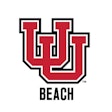|
Copyright 2013 Charleston Newspapers Charleston Daily Mail (West Virginia) |
|
August 27, 2013, Tuesday
|
|
NEWS; Pg. P8A
|
|
704 words
|
| EMS Medical Time Out may save lives; High school athletic coordinators prepare for medical emergencies |
|
LISA SHREWSBERRY, THE REGISTER-HERALD
|
|
BECKLEY - There's a new call on the gridiron for crisp Friday nights in the coalfields, one made by an official other than the referee. Dr. Jim Kyle, West Virginia Region 1 Emergency Medical Services director, is putting a pre-game Medical Time Out into play, a chance for all EMS workers and high school athletic coordinators to complete a potentially life-saving checklist for preparedness. He is currently rolling out his plan county by county across southern West Virginia. Emergencies can happen at any point and in any form come game-time, off the field as well as on, testing response team readiness when every second counts. "Parents are scared to death about their kids playing American football. Some of these kids are getting hit with 70 g's of force. As a parent, wouldn't you like to know that the medical teams are ready?" asks Kyle. With the attention on safety focused on head trauma in young football players, the practitioner also emphasizes you can't ignore the crowd. "Did you know the No. 1 place to have a heart attack in a small community is at a sporting event?" What Kyle is proposing is a program of coordinated objectives to be met between EMS personnel and medical staffs present at high school football games, a meeting of the minds about the what ifs. "What if the ambulance leaves? What if there's a neck injury - where will (air transport) land?" Having unrolled his medical version of pre-game coverage this season with Concord University as its home team physician, Kyle will now present to high schools and emergency response teams how to gather to complete an emergency medical inventory 30 minutes prior to kickoff. His checklist includes evaluation of Advanced Cardiac Life Support equipment, backboard and medical tools inventory, identifying and conveying a landing zone for possible air medical transport and reviewing a plan for spectator illness. Those in the medical huddle include team physicians, athletic trainers, paramedics and cheerleader injury teams. In addition to his checklist, Kyle is also teaching a system of hand signals for effective communication between emergency medical teams to enhance communication and avoid startling spectators with confusing shouts and mayhem, especially when player injury occurs and there are parents in the stands. Since serious injury is still a relative rarity at games, weaknesses in medical response might only reveal themselves when the situation is critical, to someone's irrevocable harm. For instance, Kyle explains if a player is unconscious with a helmet on, the first crucial step is to remove the facemask. "This can only be done with a special screwdriver." Imagine, he poses, a game where no one knows where to find the screwdriver. "It doesn't help if it's locked up in the principal's office." This and other pitfalls present "Who's On First?" scenarios too costly to consider after the fact. Where before an ambulance at a football game stood as stationary as the pre-game concession stand, now, before it is parked, EMS teams and all others involved will take stock, actively getting on the same page about assigned roles, the who, what, when, how and where, in case emergencies happen. Kyle's experience in both sports medicine and emergency medicine qualifies him well for youth athletics advocacy. He helped develop the protocol used at the 1996 Summer Olympics in Atlanta, where he acted as a team physician for USA track & field. His idea for a conscious, coordinated response effort at the high school level came when he quizzed others in sports and emergency medicine at a convention in Las Vegas about their local youth sports plans. "Big high schools across the country had plans in place, but no one else was doing this in a formalized way," he states. Piloting his program within his region of responsibility, Kyle plans to take his checklist statewide in 2014. Once it is sufficiently fine-tuned, his goal is to create an online continuing medical education course to reach school sports programs and EMS personnel across the nation. "This is a more coordinated effort. Responding to an emergency is all about preparation." For more information about Dr. Kyle's Medical Time Out, call 304-763-0785 or email [email protected] |
|
August 27, 2013
|
Terms and Conditions Privacy Policy



































